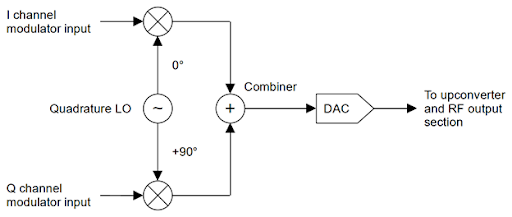April 26, 2023 - The Power of Vector Signal Generators in Modern Communication Systems
In modern communication systems, the demand for accurate and versatile signal generation has increased significantly. Vector signal generators (VSGs) are a crucial tool used in the development, testing, and validation of communication systems. This blog post discusses what a vector signal generator is, it’s working principle, and some of its important applications.
What is a Vector Signal Generator?
A vector signal generator (VSG) is a test and measurement instrument used to generate and modulate radio-frequency (RF) signals. VSGs are capable of generating a wide range of modulated signals, including amplitude modulation (AM), frequency modulation (FM), phase modulation (PM), and more advanced digital modulation schemes, such as quadrature amplitude modulation (QAM) and orthogonal frequency-division multiplexing (OFDM).
How does a Vector Signal Generator work?
A VSG produces RF signals by generating baseband signals and modulating them with an RF carrier. The baseband signals are generated using arbitrary waveform generators (AWGs) that produce digital waveforms. These waveforms are then converted to analog signals using digital-to-analog converters (DACs). The analog signals are then fed into a modulator that modulates the RF carrier with the baseband signal, producing an RF signal.

Applications of Vector Signal Generators:
- Arbitrary I/Q Waveform: Vector signal generators can generate complex I/Q (in-phase and quadrature) modulated signals that are used in advanced communication systems such as 5G and Wi-Fi. These signals require precise and accurate timing, frequency, and phase control.
- Radar Signal Simulation: VSGs are used to simulate radar signals for testing and validation of radar systems. Radar signals are complex and require accurate frequency, phase, and amplitude control.
- Receiver Testing: Vector signal generators are used to test the performance of radio receivers. The generator produces a signal that simulates a transmitter, and the receiver's output is analyzed to determine its performance characteristics.
- Avionic Modulation Emulation: VSGs are used to emulate avionic modulation schemes, such as those used in military and commercial aircraft communication systems.

- Pulse Descriptor Word Agility: VSGs are capable of generating pulse descriptor word (PDW) signals that are used in electronic warfare (EW) systems. These signals require high-speed switching and precise timing control.
- Mobile Radio Chip (Multi-standard): VSGs are used to generate test signals for mobile radio chips that support multiple communication standards such as 2G, 3G, 4G, 5G and 6G.
Berkeley Nucleonics Model 875 Vector Signal Generator:
The Model 875 is a high-performance VSG that offers a frequency range of 40 GHz and power output ranging from -50 to +20 dBm (-90dBm optional). The generator offers exceptional signal quality and phase noise performance, making it an ideal tool for testing and validating communication systems. The Model 875 comes with advanced features such as pulse modulation, digital pre-distortion, and frequency hopping that make it a versatile tool for a wide range of applications.
Vector signal generators are a crucial tool used in the development, testing, and validation of modern communication systems. The Model 875 is a high-performance VSG that offers exceptional signal quality and versatility, making it an ideal tool for testing and validating communication systems. For more information on the Berkeley Nucleonics Model 875, visit the product page at this link.
